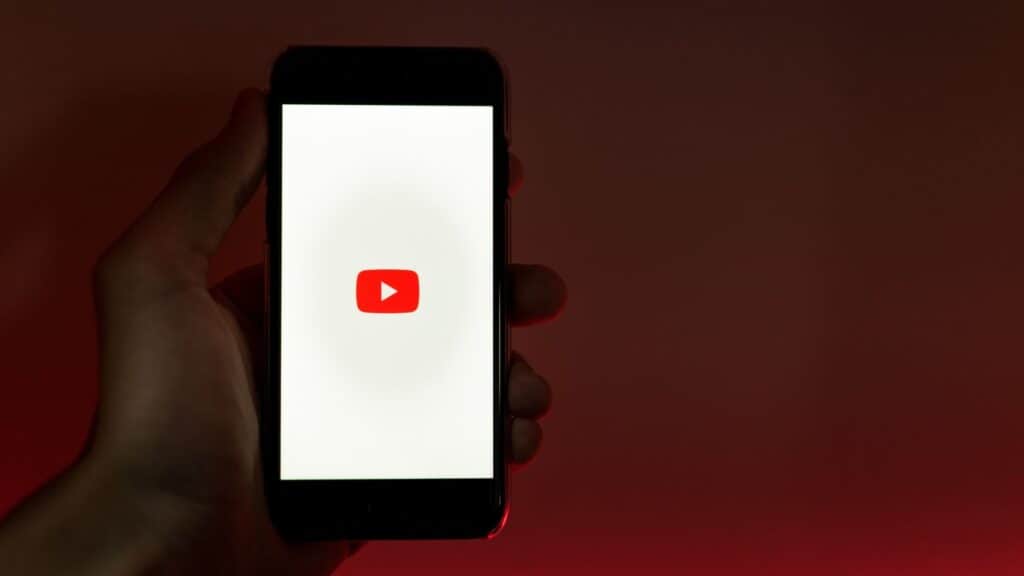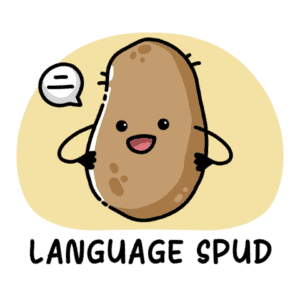
Since YouTube came into existence in 2005, it has become the second most visited website in history with well over 2 billion users.
But while we ponder the scary fact that Google now basically owns the earth, consider something else.
There is more language learning content available on YouTube you could hope to see in your entire life.
There might be a lot of bad content to sift through, but YouTube has the power to offer you a completely free education on most languages for the grand price of $0.
All you need is an internet connection and a device to view the content on.
But if your goal is to learn a language from YouTube, keep in mind that selecting a video, watching it, and having your target language just seep into your brain isn’t going to work. In fact, trying to learn a language like this is going to completely overwhelm you as a beginner, and it will actually harm your language progression.
YouTube needs to be used as part of an overall learning strategy that hits your target language from all angles.
Let’s look at the main reasons YouTube is so useful for language learning and how you can use it as part of your overall study plan.
Active Learning Material
These days, there are lots of companies selling their language learning programs on YouTube.
Some of these programs are good, and some of the free content they offer is quite useful.
But what if you really don’t want to spend any money at all?
Well, the good news is YouTube is also stuffed full of language teachers and services plying their trade and teaching you all aspects of a language for free.
The following are links to posts which share the best YouTube channels for new learners of the most commonly learned languages:
If you’re learning Mandarin Chinese, I’ve compiled a huge list of YouTube channels that offer something for learners at every level – 57 of the Best YouTube Channels for Learning Mandarin Chinese.
YouTube Provides Endless Amounts of Comprehensible Input
Comprehensible input is language that can be understood by someone even if they don’t understand every word in it.
And you’re going to need a lot of it if you’re going to get to a high level in another language.
But how do you find ‘comprehensible input’?
What constitutes comprehensible input for you?
Finding language input that is “i + 1” is easier said than done and will initially require some trial and error.
It’s also important to point out that that there is no such thing as the ‘perfect’ level of comprehensible input, and many learners (including myself) waste a lot of time trying to find it, instead of actually listening and reading in their target language.
The good news?
YouTube has an enormous collection of comprehensible input in your target language.
It might take you some time to find stuff that you enjoy, but if you can’t find something you like on YouTube, you might want to get another hobby…
YouTube is Free
Times are tough, am I right?
It’s natural for us to want to save money at every turn, and I genuinely believe that some of the best language learning tools out there are completely free.
On my own quest to learn Mandarin Chinese, I have compiled a collection of free learning resources in the post Learn Chinese for FREE | Free Apps, Sites, Courses, and Media.
YouTube is one of those resources.
There are definitely language learning tools and resources out there that are worth paying for, but many people find it hard to accept that learning a language to a high level doesn’t require a huge investment.
Seriously, you don’t need to study a language at university to become fluent.
In fact, in this post I’d argue against studying a language at college.
Just remember that when it comes to accessing a range of audio-visual content in your target language without spending a dime, YouTube is there for you.
You can Access Culture with YouTube, not just a Language
This is an aspect of media, and art in general, that is a huge plus point for learning a new language.
Movies, TV shows, podcasts, books, etc. all provide a window into the culture of where they come from.
If one is to reach a high level in another language, it definitely helps if you can fall in love with aspects of their culture.
It’s not essential, but it helps.
As a Mandarin learner myself, I have compiled very large collections of movies, TV shows, podcasts, and books that not only help intermediate and advanced learners of Chinese, but they collectively provide a great insight into Chinese culture.
- Learn Mandarin with Film | 101 Awesome Chinese and Taiwanese Movies
- 101 TV Shows for Chinese Learners | Drama, Action, Comedy, and More!
- 100+ Podcasts for Learning Chinese | Beginner to Advanced Material
- 89 Awesome Chinese Books for Advanced Learners of Mandarin
YouTube Can be Utilised in a Number of Ways
A lot of people assume language learning via YouTube consists of simply choosing a video and watching it.
But to remember new language and get the most out of a YouTube video, a more active method of engagement is required.
Let’s look at a few ways you can really maximise the efficacy of your language study using YouTube.
Shadowing
I’ve written about the benefits of shadowing in a number of posts on this site.
It’s one of the best things you can do to improve speaking skills in a foreign language, and it’s recommended by many language enthusiasts.
There are a few ways you can practice shadowing or ‘parroting’, but it’s basically the act of copying or mimicking what you hear in real time, usually with a split second delay.
Here’s how to shadow:
- Select a YouTube video – convert the video into an audio file. be careful not to choose a video that’s too long. Personally, I think the sweet spot is around 10-15 minutes. Any longer and it starts to really hurt my brain and I lose concentration.
- Check your understanding – I prefer to obtain audio that has either been transcribed already or I’ll use the transcribe tool (explained later) so I can read what I’m hearing first. This isn’t absolutely essential, as your understanding will improve through repeated consumption anyway.
- Slow it down – Shadowing is difficult, and in the beginning it will feel very weird and you will suck at it. That’s why you should slow it down. I use an app called AudioStretch. I’ll import a podcast from Chinesepod and set the playback speed at around 60%, gradually increasing the speed as I get more comfortable with it.
- Repeat – I shadow the same podcast daily for a full week. That’s right. One whole week. That might sound boring to some people, but by the end of the week I have so much new language etched into my brain that it’s virtually impossible to forget it. Remember to select audio on a topic that’s really interesting to you so you don’t get tired of it too quickly.
Reading
The majority of Chinese TV shows and movies come with subtitles.
This is a huge advantage for Mandarin learners because it’s what I call dynamic comprehensible input.
When you’re watching TV with subtitles, you’re reading and listening at the same time.
One could argue this is counterproductive if you’re trying to get listening exposure only. However, once your listening skills get really good, you can always just not look at the subtitles…
Transcribing
Language input consists of reading and listening. Lots of it.
So, another useful tool you can access from YouTube is the transcription of videos.
You can do this a couple of ways.
- Self-transcribe – You can watch short videos and try to write down what you hear. This is an activity I couldn’t get into, but a lot of language learners speak of its efficacy.
- Use a transcribing service – sites like Trint and Happy Scribe (Mandarin only) allow you to instantly transcribe any video and create a text document you can read anywhere at any time.
Immersion
There are plenty of people who’ve learned languages to a very high level without ever visiting the country where their target language is spoken.
They have all done this by creating an immersive learning environment for themselves, and the immersive experience you need is one you can get from YouTube.
Seriously, you don’t need to move to Rome for 30 years to get good at Italian!
… I mean, it definitely helps, and you’d probably have a pretty good time, too.
However, YouTube provides the immersive experience you need for a fraction of the cost and effort.
Summary
YouTube is hands down one of the best tools at your disposal for language learning.
However, it’s important to point out that you won’t be able to get everything you need language-wise from YouTube.
Perhaps one of the biggest issues I’ve found with YouTube channels trying to teach the basics is that they’re not well structured for beginner learners.
That’s why I’m an advocate of textbooks for beginner learners because they give you what YouTube can’t – a logical, easy-to-follow curriculum that builds gradually on previous material.
For my recommendations of textbooks for Mandarin Chinese, check out Learning Chinese: The Best Textbooks For Beginners.
There’s also the issue of lesser spoken languages not having as much content on the platform.
Nevertheless, if you’re after the widest available choice of content in your target language, YouTube should be your first port of call.
Further Reading
If you’re learning Mandarin and you’re looking for some recommended resources and tips, check out the posts below.
- Mandarin Learning Resources: Everything You’ll Ever Need for Fluency
- The 21 Best Apps For Learning Mandarin Chinese
- Learn Chinese for FREE | Free Apps, Sites, Courses, and Media
- Learning Chinese Grammar: The 7 Most Effective Tools and Techniques
- Where Can I Find Good Chinese Teachers Online?
- Learning Chinese Characters: 5 Effective Strategies
- Can I Live In China Without Speaking Chinese?
- 10 Reasons to Learn Mandarin Chinese
- Learning Chinese: 15+ Listening Tools Perfect for Beginners
- 7 Tips for Drastically Improving Your Pronunciation of Mandarin Chinese
- 7 Useful Tips for Improving your Chinese Handwriting
- Can you Learn Chinese by Studying Only 5 Minutes a Day?
